E. HABICH, THE BOSTON BREWER
aka "The Author Conundrum", an examination of an unexplained past event
Here are some interesting facts on a part of the Habich family which emigrated to the US in the 19th century.
Who was E. Habich?
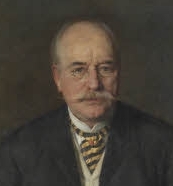 Edward Habich
Edward Habich
German; Male; Zeitstrahl 1818 - 1901
Also known as
Habich, Edward; Habich, George Edouard
He was a selfmademan, brewer, inventor, collector of drawings and paintings,
patron of the arts and archaeology, freemason.
Born as Georg Eduard Habich, on 7.7.1818 in Veckerhagen,
as the second child of eight children from August Heinrich Habich
(1792-1837) and his wife Louise, born Louise Quentin zu Thedinghausen.
He emigrated to France and then to Boston, USA.
Edward Habich made a large fortune within a few years with the production of high-quality beer
and, upon his return to Germany,
became a respected patron of the arts.
The Beginnings and Brewery success
E.Habich went from his native Germany to Paris in 1840 to pursue language studies.
On April 6, 1841, following the tradition of his brother Georg Evert,
and uncle and his grandfather,
he became a freemason in the Johannisloge of Pythagoras to the three Streams,
in Germany.
In 1845 he went with borrowed money to New York.
From then on he called himself Edward Habich,
"an American citizen of Boston and Washington".
Among other things here tried there to make a living, was the production and sale of
"cheap ultramarine" colors (together with his business partner George Tiemann).
He also learned to manufacture cigars and worked with the British tea merchant "Grinnel, Mintum & Co".
The production method for synthetic ultramarine color had been developed by his brother,
but Edward failed to make a commercial success of it in New York and lost his entire capital.
Bankrupted, E. Habich went to Haiti to find his luck, were he founded the company "Kelly & Habich".
Despite contracting a fever he stayed there for several years before returning to New York in 1849.
Upon his return he traded as a coffee merchant and married his wife Amalie Elisabeth Dedolph in 1852.
 This is when E. Habich became successful with his brewery.
This is when E. Habich became successful with his brewery.
Habich was the first Boston Brewery to make Lager beer in the 1850’s.
A Habich “Norfolk” Brewery,
was active from 1874 to 1902,
located at 171 Cedar Street.
Edward and his wife had a son named Henry William Habich in 1856.
In genealogical records Edward Habich is listed as George E Habich.
Genealogical tracing of relatives can start from this point.
Return to Germany
Edward Habich returned to Germany around 1866 where he began to study
comparative linguistics, literature, and history in Berlin.
He also studied Old-Provencal, (the language of Southern France),
and traveled extensively to learn Hungarian as well as Arabic, and learned Russian at the age of 75.
In Kassel he founded an Italian and Spanish poetry reading circle and
tried to improve the classical
German translation of Shakespear's work.
The Habich Art Collection
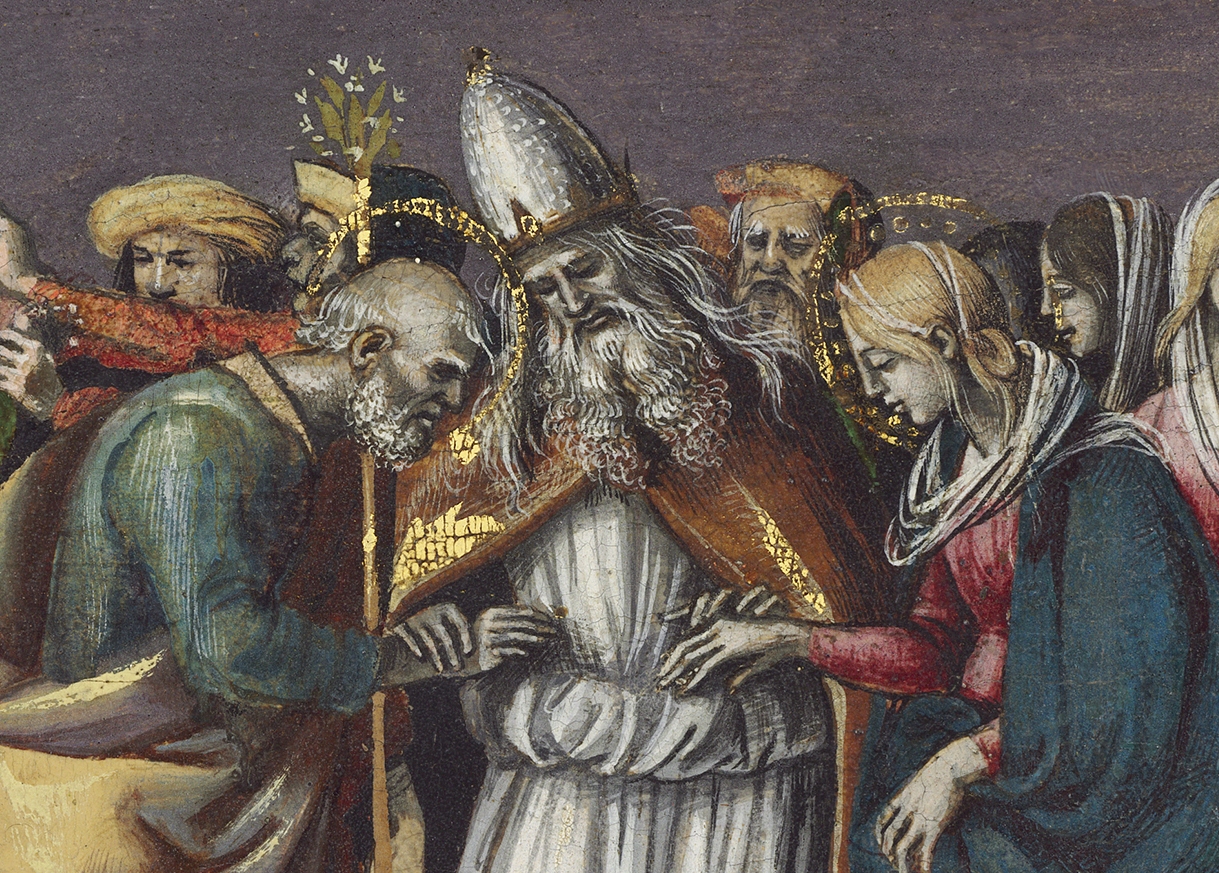 In 1886 and over many years E. Habich travelled
In 1886 and over many years E. Habich travelled
regularly to Paris with his friend Giovanni Morelli,
were they visited the Louvre to view thousands of
drawings and photographs to identify art forgeries.
Giovanni Morelli was an Italian art critic and political figure.
Morelli as an art historian developed the "Morellian" technique of scholarship,
identifying the characteristic "hands" of painters through scrutiny of diagnostic
minor details
that revealed artists' scarcely conscious shorthand and conventions
for portraying, for example, ears.
(above) Detail of "The Marriage of the Virgin"
by Luca Signorelli, ca. 1490,
today in
The National Gallery of Art,
Washington DC
Provenance of this painting is proven to have first been auctioned by Thomas Blayds in London in 1849, as The Birth of St. John.
It was then owned by Edward Habich, Kassel, probably from the 1890s and then
presented in 1900 to the Königliche Gemäldegalerie, Kassel; sold around 1920.
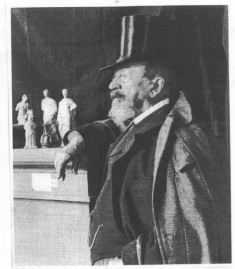
In 1892 Edward Habich auctioned a part of his extensive collection of paintings.
At the instigation of the German Emperor,
17 of those paintings were aquired by the
Kassel State Art Collection
and other parts of his collection,
which was auctioned in 1901,
also came into Kassel's
possession.
The catalogue of Edward Habich's collection of drawings included
first-class paintings by distinguished masters from the Dutch,
Flemish, German, Italian and English schools of the
15th to 18th century.

"With respect to his male descendants still living in America",
Habich auctioned part of his extensive collection of paintings,
which "came under the hammer" on the 9th and 10th of May 1892,
in his 75th year of life.
Archaeology
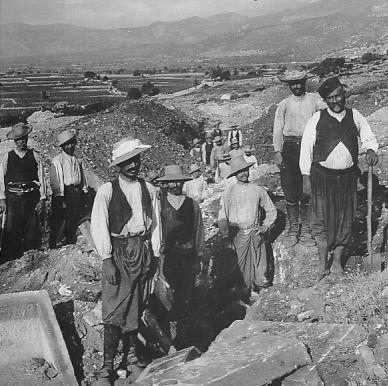 The archaeological excavations on Samos by Dr. John Boehlau in 1894,
The archaeological excavations on Samos by Dr. John Boehlau in 1894,
which were financed by Edward Habich,
are probably his greatest merit for posterity.
A poem from the time goes:
"Friend Habich, however, chooses the best,
He keeps the ancient remains,
Because he is the father of the dig."
The German archaeologist Heinrich Schliemann (1822-90) had a similar career as Habich,
becoming wealthy as a merchant.
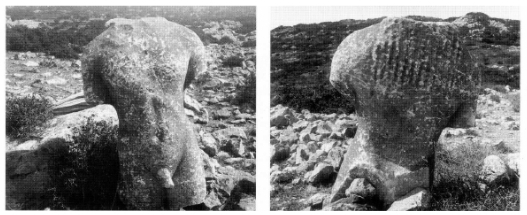 Schliemann suggested to Edward to go on digs with him in Asia Minor.
Schliemann suggested to Edward to go on digs with him in Asia Minor.
On Habich's reply that he had a wife and children,
Schliemann replied: "Leave them behind!"
He did not.
E. Habich modestly remarked that the best thing about him were his friends.
Habich & Co. Norfolk Brewery prospered and traded until 1902, one year after his passing.
Edward Habich passed away on 12. September 1901 in Kassel, Germany.
The Author Conundrum
How did a man's name get on a book in 1842, which he most likely didn't write?
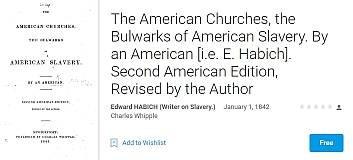 When I was working in London in Fleet Street,
When I was working in London in Fleet Street,
for a company called "Fermaprint" I once went for a walk near Old Holborn.
As I strolled through the bustling streets in the typical London drizzle,
taking in the sights and sounds of the area, I came across the reading room of the British Library at the Museum at Holborn.
The core of the Library’s historical collections is based on a series of
donations and acquisitions from the 18th century.
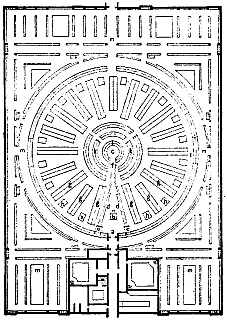
I decided to get out of the rain and take a look inside,
having the idea that there might be a book of interest to me.
I saw a map at the entrance hall, showing the layout of the library to visitors.
The layout of the library struck me as looking very much like a keyhole.
The picture shows the layout of the "British Museum Library",
where I walked into in the 1980's.
I went to the help desk and was admitted
as a researcher,
after I told them I did research on the Habich family,
as this library was not open to the general public.
Then I looked through the printed catalogue of books.
And sure enough, I found an entry for the name Habich.
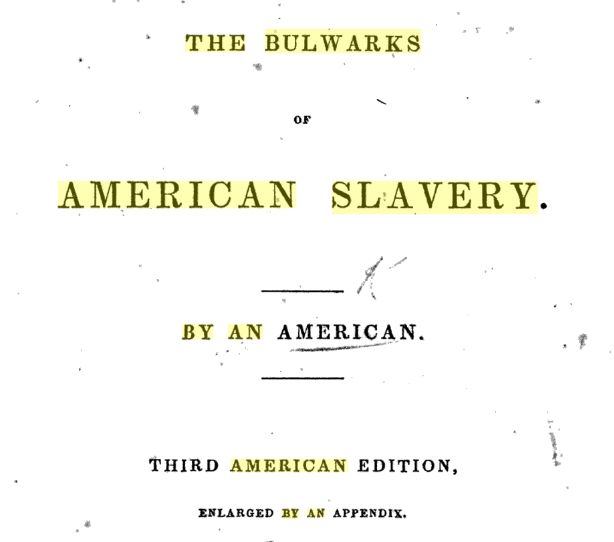 As I was waiting whilst the book was being retrieved,
As I was waiting whilst the book was being retrieved,
I met an American visitor and we started talking.
I told him I had found a book on slavery in the library catalogue from 1842,
and the writer was named E. Habich.
He saw my visitor pass, which also stated my name as E. Habich.
The man was incredulous at this,
hastily wished me all the best and said we would me me again in the next life.
Afterwards, I went inside the library.
I picked the book up at the central collection point and took it to a reading desk.
Supposedly,
an ancestor of the Habich family went to the US,
and wrote a book about slavery,
titled
"The American Churches, the bulwarks of American slavery."
The book does not deal with the churches role in the struggle against slavery, as one first might assume,
but instead the book implies that the churches were instrumental in keeping the people enslaved...
I believe to recall that the edition of "The American Churches" that I was given,
had the name "E. Habich" printed on the cover, as the author of the book. But that can be a false memory.
 Today, in 2016, I cannot verify this information, as all online editions of the pamphlet have a blank space.
Today, in 2016, I cannot verify this information, as all online editions of the pamphlet have a blank space.
In many cases, the name "Birney" is handwritten under the line "By an American".
Furthermore, I believed the edition I saw, was from Newburyport in 1864.
This was significant to me at the time, as it would have been exactly 100 years before my birth.
I already had a fairly formed opinion on reincarnation.
And the place of publication, Newburyport 1842, "new bury port"
I had interpreted as the place of my previous departure, or passing.
What is puzzling today, after I have researched the supposed author of the book,
is, that it does not appear that E. Habich did ever write the book.
Instead, the book is credited in some online resources to James G. Birney,
a well known American writer and presbyterian minister,
who was a famous for his stance and campaing on the abolition of slavery.
Ref. James G. Birney: https://en.wikipedia.org/wiki/James_G._Birney
It is now the question,
how did the name E. Habich come to be catalogued as the author in the British Library?
And why did I find this particular oddity?
The obvious answer is, I was looking for a book with my name on it.
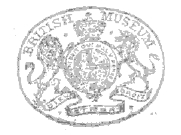 There is a strong possibility that James G. Birney did not want to claim authorship of the book,
There is a strong possibility that James G. Birney did not want to claim authorship of the book,
because he was a presbytarian minister himself.
So instead, he got someone else to put his name on it,
to have the book deposited in the British library.
As E.Habich was a freemason it would have been in his interest to advance the
equality and
brotherhood of all men and women.
He would have been 24 years old when the book was published, but at the time, he was not in America.
References:
"The American Churches, the bulwarks of American slavery." complete book on:
https://play.google.com/store/books/details/Edward_HABICH_Writer_on_Slavery_The_American_Churc?id=7zFcAAAAcAAJ
The abolitionist James G. Birney: https://en.wikipedia.org/wiki/James_G._Birney
George Habich genealogical research: : https://www.myheritage.de/names/george_habich
Portrait Edward Habich (by Kleinschmidt)
Date: 1885 - 1890
Full-portrait sitting on a red plush armchair in black jacket, pale-violet trousers,
light vest and white shirt, with black-yellow striped necktie and glasses.
From: http://malerei19jh.museum-kassel.de/show.html?kuenstler_id=106&nr=2&sort=K
Biographical notes:
"Hessian freemasons in exile and commerce", by Siegfried Lotze.
An investigation into the bourgeoisie by the example of the network around the Habich family in the 19th century:
http://nbn-resolving.de/urn:nbn:de:hebis:34-2012031940937
Giovanni Morelli: https://en.wikipedia.org/wiki/Giovanni_Morelli
Archaeologist Johannes Boehlau: https://en.wikipedia.org/wiki/Johannes_Boehlau
Zeigen und/oder Beweisen?:
Die Fotografie als Kulturtechnik und Medium des Wissens,
by Herta Wolf, 21. Nov. 2016, https://books.google.de/books?id=ugqyDQAAQBAJ
The auction catalogue of the Habich collection from 1892 is listed here: https://archive.org/details/gemldde00kuns
The old auction catalogue is sometimes sold on Amazon: http://amzn.to/2hDb1bd
Trade Names for the brewery at 171 Cedar Street, Boston, Massachusetts:
1874-1888: Edward Habich (171 Cedar Street)
1888-1901:
Habich & Co., Norfolk Brewery
1901-1902:
Massachusetts Breweries Co.,
Habich Brewery,
closed in 1902
http://www.taverntrove.com/brewery.php?BreweryId=19173
 Edward Habich
Edward Habich  In 1886 and over many years E. Habich travelled
In 1886 and over many years E. Habich travelled 

 Schliemann suggested to Edward to go on digs with him in Asia Minor.
Schliemann suggested to Edward to go on digs with him in Asia Minor. 



 There is a strong possibility that James G. Birney did not want to claim authorship of the book,
There is a strong possibility that James G. Birney did not want to claim authorship of the book,